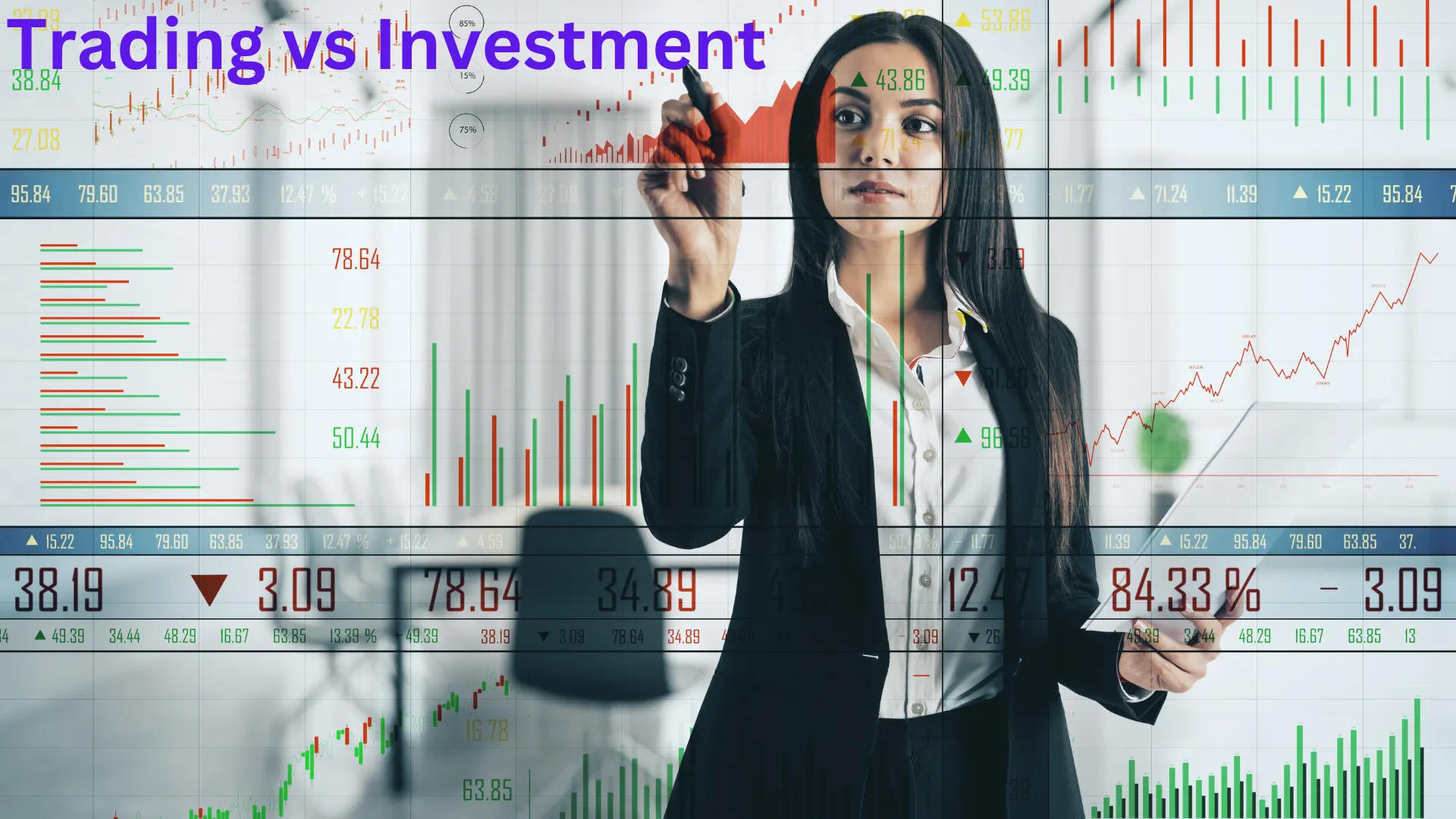Difference Between Trading and Investment
Trading and investment are two distinct approaches to participating in the financial markets, each with its own strategies, goals, and time horizons. While both involve buying and selling financial assets, they differ significantly in terms of objectives, risk tolerance, and the techniques employed. Understanding these differences is crucial for anyone looking to navigate the world of finance effectively. Here’s a breakdown of the key distinctions between trading and investment:

1. Objective
Trading: The primary goal of trading is to generate short-term profits by buying and selling financial assets like stocks, commodities, currencies, or derivatives. Traders aim to capitalize on price fluctuations within a short period, ranging from minutes to days or weeks. The focus is on making quick gains from market volatility.
Investment: The objective of investment is to build wealth over the long term by holding assets for an extended period, often years or even decades. Investors typically seek to benefit from the appreciation in the value of their assets, such as stocks or bonds, as well as from dividends or interest payments. The emphasis is on steady, sustainable growth rather than immediate profit.
2. Time Horizon
Trading: Trading operates on a short-term horizon. Depending on the trading style, the holding period for assets can vary. For example, day traders buy and sell assets within the same trading day, while swing traders may hold positions for several days or weeks. The short time horizon requires traders to be highly active and responsive to market movements.
Investment: Investment is inherently long-term, with a focus on the gradual accumulation of wealth. Investors typically hold onto their assets for several years, aiming to ride out market fluctuations and benefit from the overall upward trend of the market. This long-term perspective allows investors to focus on the fundamental value of assets rather than short-term price movements.
3. Risk Tolerance
Trading: Trading involves a higher level of risk due to the short-term nature of the activity and the reliance on market volatility. Traders must be prepared to face significant price swings and potential losses in their pursuit of quick profits. The high-risk, high-reward nature of trading requires a strong understanding of market dynamics and a disciplined approach to managing risk.
Investment: Investment generally involves lower risk compared to trading, as it is based on the long-term growth potential of assets. Investors typically adopt a more conservative approach, focusing on diversification and the underlying value of their investments. While investments are not immune to market risk, the extended time horizon allows investors to weather short-term volatility and benefit from compounding returns.

4. Analysis Techniques
Trading: Traders rely heavily on technical analysis, which involves studying price charts, patterns, and indicators to predict short-term market movements. Technical analysis helps traders identify entry and exit points for their trades. Additionally, traders may use market sentiment, news, and economic data to inform their decisions.
Investment: Investors primarily use fundamental analysis to assess the intrinsic value of an asset. This involves analyzing a company’s financial statements, management quality, competitive position, and growth prospects. The goal is to identify undervalued assets that have the potential to appreciate over time. While technical analysis can also play a role in investment, it is usually secondary to fundamental considerations.
5. Frequency of Transactions
Trading: Trading involves frequent buying and selling of assets, sometimes multiple times within a single day. The high transaction frequency means that traders must pay close attention to market movements and be ready to act quickly. This active approach requires a significant time commitment and often incurs higher transaction costs.
Investment: Investment involves relatively infrequent transactions. Once an investor has selected their assets, they tend to hold onto them for extended periods, making adjustments to their portfolio only when necessary. This buy-and-hold strategy reduces transaction costs and the need for constant market monitoring.
6. Emotional Discipline
Trading: Trading requires a high degree of emotional discipline, as traders must make quick decisions under pressure and cope with the psychological impact of frequent gains and losses. The fast-paced nature of trading can lead to emotional stress, making it crucial for traders to maintain a clear and focused mindset.
Investment: Investment also requires emotional discipline, but in a different way. Investors must resist the urge to react impulsively to short-term market fluctuations and maintain a long-term perspective. Patience and the ability to stay calm during market downturns are key traits of successful investors.

Conclusion
While trading and investment both involve the buying and selling of financial assets, they are fundamentally different in terms of objectives, time horizons, risk tolerance, and strategies. Trading is a short-term, high-risk activity focused on capitalizing on market volatility, whereas investment is a long-term approach aimed at building wealth through steady growth. Understanding these differences can help individuals choose the path that aligns with their financial goals, risk appetite, and lifestyle.